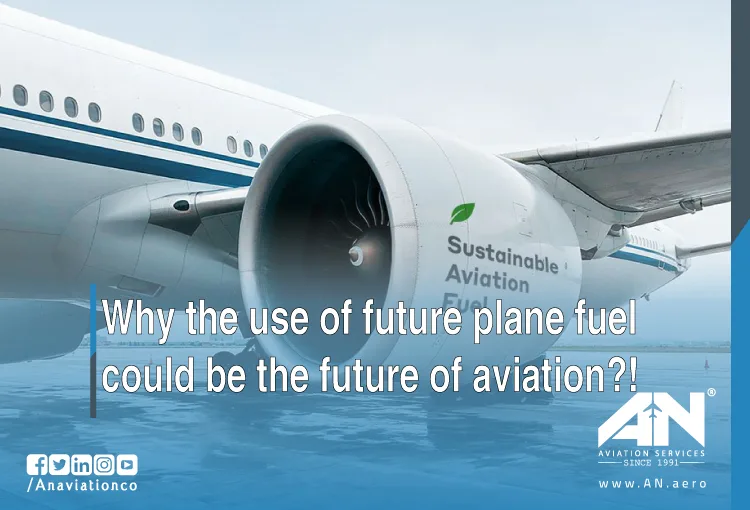
As the aviation industry takes significant steps toward becoming more environmentally sustainable, the concept of future airplane fuel has emerged as a groundbreaking innovation that could redefine air travel. With increasing concerns about climate change, greenhouse gas emissions, and the environmental impact of fossil fuels, the push for alternative energy sources is no longer optional—it’s imperative.
Future airplane fuel, such as sustainable aviation fuel (SAF), is at the forefront of this transformation, offering a promising path for reducing the aviation sector’s carbon footprint while maintaining efficiency and reliability.
The Current Challenge of Conventional Jet Fuel
For decades, the aviation industry has relied on conventional jet fuel, primarily derived from fossil fuels, as the backbone of air travel. While jet fuel has enabled the growth of commercial aviation, its dependence on finite natural resources and its contribution to carbon dioxide (CO2) emissions have raised concerns. Currently, aviation accounts for approximately 2.5% of global CO2 emissions—a number that is expected to rise as air travel increases post-pandemic.
The issue with traditional jet fuel lies in its lifecycle emissions. From extraction to combustion, the environmental cost is steep. This has prompted governments, environmental organizations, and airlines to invest in renewable energy alternatives, pushing for the use of SAFs that are capable of reducing greenhouse gas emissions by as much as 80% over their lifecycle compared to fossil-based fuels.
What Is Sustainable Aviation Fuel (SAF)?
Sustainable aviation fuel is a type of alternative energy derived from renewable sources, such as cooking oil, agricultural waste, and even carbon captured from the atmosphere. Unlike conventional jet fuel, SAF is designed to drastically lower emissions while maintaining the same performance standards needed for commercial flights.
One of the primary benefits of SAF is that it can be used as a “drop-in fuel,” meaning it’s compatible with existing aircraft engines and infrastructure. Airlines do not need to overhaul their fleets or invest in expensive retrofitting, making SAF a practical and cost-effective solution for long-term sustainability.
Key SAF production methods include:
- Hydroprocessed Esters and Fatty Acids (HEFA): Using waste fats, oils, and greases.
- Alcohol-to-Jet (ATJ): Converting alcohol-based feedstocks into jet fuel.
- Carbon Captured Fuels: Synthesizing fuel from carbon dioxide and renewable energy.
How SAF Supports the Future of Aviation?
1. Reducing Greenhouse Gas Emissions:
One of the most critical roles SAF plays is in the effort to reduce greenhouse gas emissions. With many countries, including the United States, committing to achieving net zero carbon emissions by 2050, SAF offers a tangible way for the aviation industry to meet its environmental goals.
The aviation industry has already set its sights on replacing 2% of all aviation fuel with SAF by 2025. By 2050, the goal is to produce 3 billion gallons annually, a target that will significantly reduce the sector’s reliance on fossil fuels.
2. Driving Innovation in the Supply Chain:
The development of SAF is spurring innovation across the aviation supply chain, from feedstock sourcing to refining processes. The adoption of SAF isn’t just about reducing emissions; it’s about creating a robust and diversified energy supply chain that is less reliant on volatile oil markets. Countries and corporations are heavily investing in SAF production facilities, ensuring a steady and scalable supply for the future.
3. Supporting Commercial Flights:
As air travel demand grows, so does the need for sustainable solutions. SAF is designed to seamlessly integrate into existing commercial flights without disrupting operations. This compatibility makes it easier for airlines to adopt SAF and scale its use across their fleets, ensuring long-haul and short-haul flights alike can operate sustainably.
The Role of Carbon Capture and Alternative Feedstocks
While SAF is a significant leap forward, the aviation industry is also exploring carbon capture technologies and innovative feedstocks to further reduce emissions. Using carbon captured from the atmosphere and converting it into fuel offers a dual benefit: reducing CO2 in the air while producing sustainable energy.
Similarly, non-traditional feedstocks such as municipal solid waste and algae are being investigated as potential SAF sources. These options could expand SAF’s availability while reducing reliance on food crops or agricultural land, making it even more sustainable in the long term.
Challenges in Adopting SAF
Despite its promise, SAF faces several challenges:
Cost:
SAF is currently more expensive to produce than conventional jet fuel, largely due to limited production capacity and the nascent stage of its supply chain. However, as production scales up and technology improves, costs are expected to decline.
Scaling Production:
Meeting the global demand for jet fuel—estimated at 100 billion gallons per year—will require significant scaling of SAF production facilities.
Regulatory and Infrastructure Barriers:
Widespread adoption of SAF will require international cooperation to establish consistent regulations and support infrastructure.
Moving Toward a Carbon-Free Future
The aviation industry’s commitment to sustainability is evident in its growing investment in SAF and other renewable energy sources. Industry leaders are setting ambitious targets to reduce CO2 emissions, with SAF playing a central role in these plans. These efforts are critical for achieving the International Air Transport Association’s (IATA) goal of carbon emissions by 2050.
Looking ahead, advancements in SAF production, coupled with technologies like blended wing aircraft and hydrogen-powered planes, could revolutionize air travel. As these innovations continue to develop, the vision of a sustainable aviation future becomes more achievable.
Final Thoughts
The future airplane fuel is not a distant dream; it is a tangible solution that is already reshaping the aviation industry. From reducing greenhouse gas emissions to creating a more sustainable supply chain, SAF and other renewable fuels are paving the way for a cleaner, greener future of aviation. While challenges remain, the industry’s commitment to innovation and sustainability ensures that air travel will remain a cornerstone of global transportation for generations to come—just with a much smaller carbon footprint.

